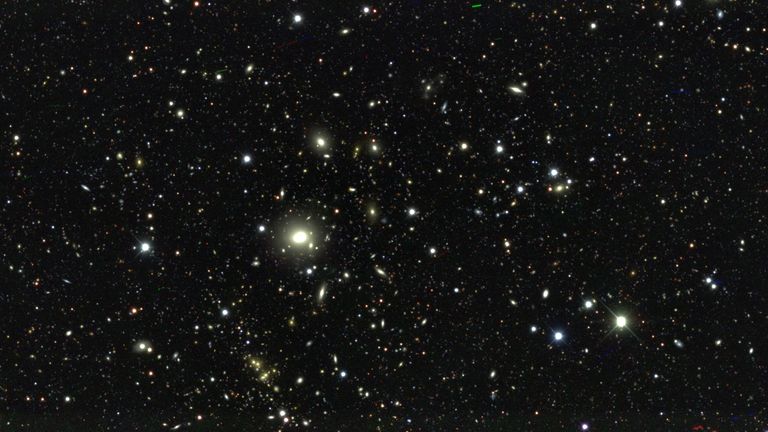
A team of researchers from the Dark Energy Survey (DES) mapped all the dark matter in the universe. The new map covers the quarter of the southern hemisphere sky. Here is all about it.
What is dark matter?
It is a material that makes up about 80 percent of the universe’s mass. It is not observable. What’s more? It does not emit energy or light. In the past astronomers suspected that there is more in the universe than what we can see. Dark energy and matter are mysterious but, we get to know about it from their unexpected behaviors.
What does this mean? Well, if galaxies on an image are clustered together it means that the galaxies in that cluster move faster than expected.
If you’re wondering how it looks, take a look!
The map shows a web-like structure. These webs have several dense clumps of matter that are separated by empty voids. Researchers observe this to get answers to myriad questions on the working of the universe.
Mapping matter in the universe
The DES team used artificial intelligence and analyzed over 100 million images of the galaxy to see how they have stretched. The photographs were from the Dark Energy Camera in Chile.
Astronomers mapped out the existence of dark matter by observing the light that travels to earth from various galaxies. If there is a distortion in this light, it means that there is dark matter bending the light as it comes towards the earth.
The new map is the representation of all the dark matter ever detected in the foreground of all known galaxies.“Most of the matter in the Universe is dark matter. It is a real wonder to get a glimpse of these vast, hidden structures across a large portion of the night sky,” said Dr. Naill Jeffery, a part of the DES team from University College London.
“Visible galaxies form in the densest regions of dark matter. When we look at the night sky, we see the galaxy’s light but not the surrounding dark matter, like looking at the lights of a city at night. By calculating how gravity distorts light, a technique known as gravitational lensing, we get the whole picture, both visible and invisible matter.” added Dr. Ofer Lahav from UCL, another member of the DES team.
